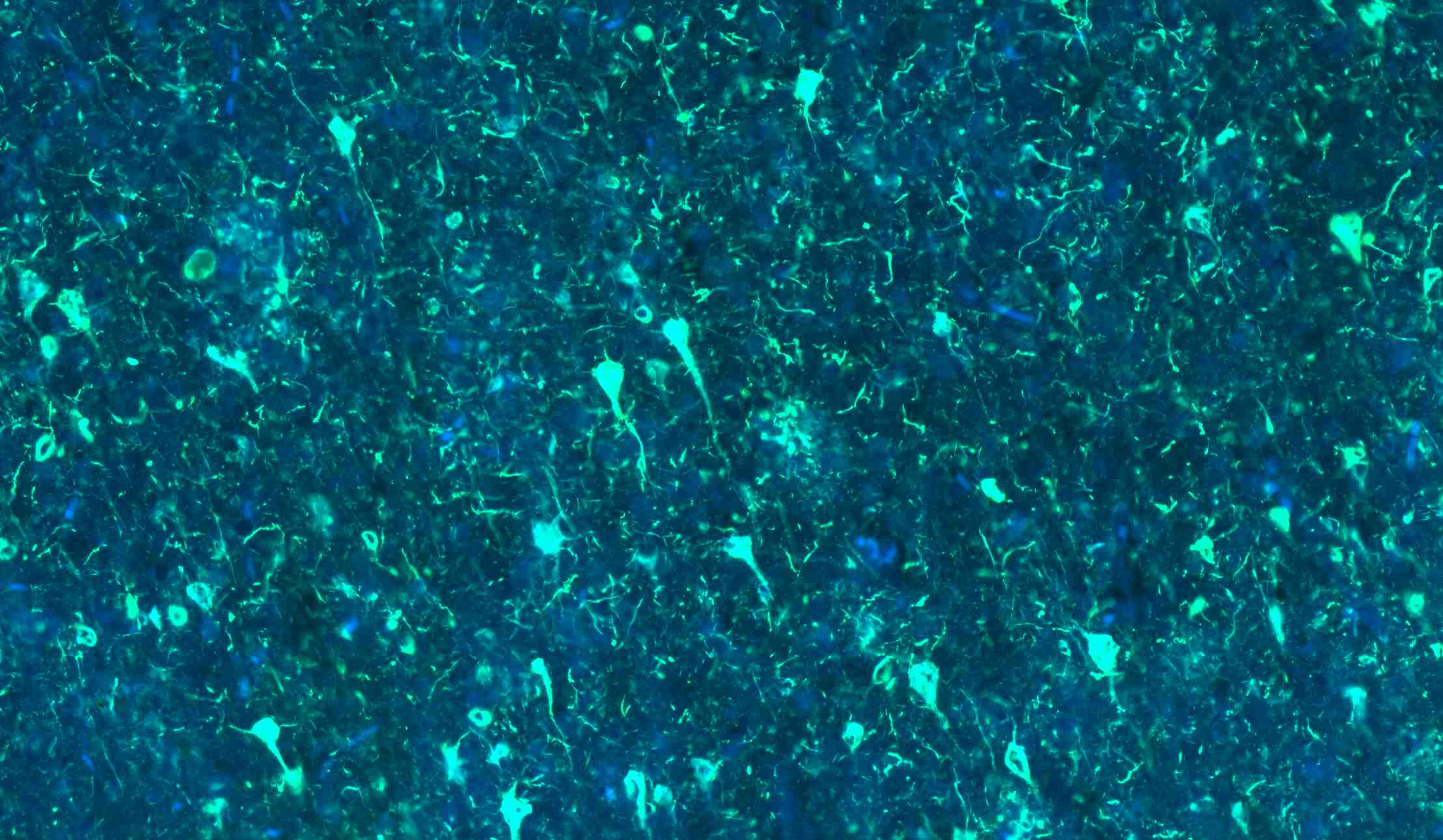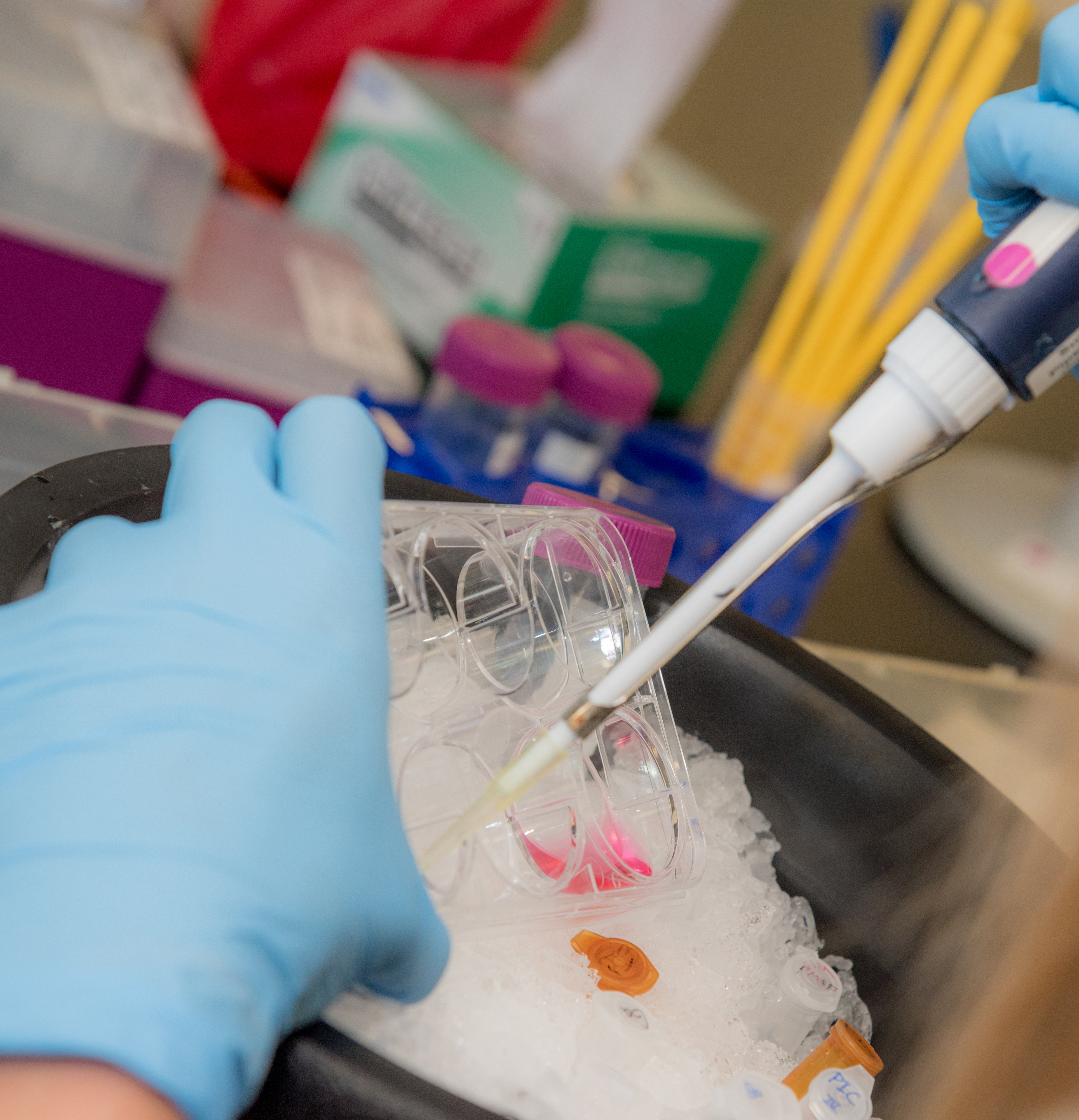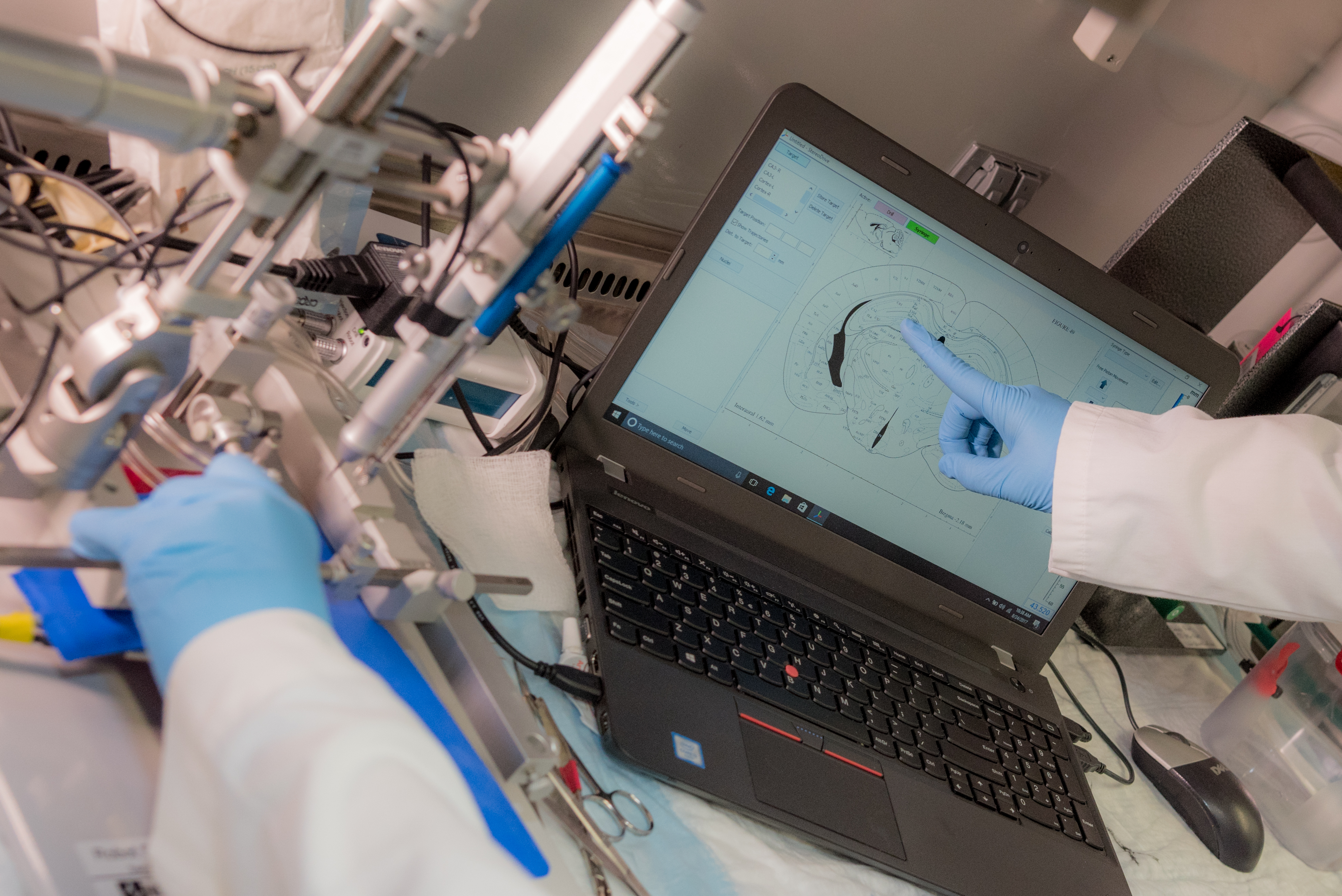Research

Biology of Degenerative Diseases Lab
We speculate that each of approximately 150 chaperone proteins could be a drug target for human diseases. Our lab is focused on chaperones capable of modulating the progression and toxicity of tauopathies, a group more than 15 neurodegenerative diseases (including Alzheimer’s disease) characterized by aberrant accumulation of aggregates of the tau protein. Our work has also explored chaperone involvement in other neuropsychiatric disorders including depression and PTSD. Our lab is involved in drug development and target validation for specific chaperone proteins, and we hope to someday soon translate these treatments and with the ultimate goal of developing a cure.

The Hsp90 cochaperone FKBP51 regulates tau structure and function
We are working to validate FKBP51 as a target for tauopathies, like Alzheimer’s disease, and explore the molecular landscape by which FKBP51 genetic variants create a vulnerability for neuropsychiatric symptoms. Neuropsychiatric symptoms are often co-morbid with Alzheimer’s disease and other tauopathies correlate with a faster decline in patients.
An Aha(1) Moment for Tauopathies
Tau is a protein that pathogenically accumulates in Alzheimer’s disease and is critically linked to neurodegeneration. Our group identified that the molecular chaperones, Aha1 and Hsp90, work together to promote tau accumulation and worsen outcomes in the brain. The lab of Dr. Brian Blagg has developed small molecules that block prevent the interaction of these molecular chaperones and slow tau accumulation in cell models. Through this project, our labs will work together to characterize the in vivo properties of our lead molecule. We will validate whether this treatment strategy is effective at preventing tau accumulation in tau transgenic mice. This study is essential for future drug development efforts of these compounds.
Exploiting molecular chaperones to understand the impact of tau aggregation on prion-like spreading in AD
Aberrant tau protein accumulates in a fashion that correlates with disease progression and does so through synaptically connected brain regions. However, we still do not understand what properties of tau seeds or cells that propagate these seeds make them susceptible or resilient to spread tau and cause damage. This project focuses on using the cell’s natural defense system, molecular chaperones, as tools to regulate this process. We hope through this work to understand more about the relationship between tau propagation and neuronal damage, as well as identify molecular targets to regulate this process.


Controlling FKBP51 for the treatment of PTSD
Some individuals are vulnerable to develop PTSD, depression, and other neuropsychiatric disorders following stress exposure due to the presence of common allelic variations in the FKBP5 gene. We want to understand more about the mechanisms underlying this vulnerability and the best way to provide resilience towards this increased risk. We are also developing therapeutics. Our goal is to develop novel strategies to deplete FKBP5, while validating FKBP5 as a key regulator of susceptibility towards PTSD-like trauma.
Support
You can support our lab through a donation to fund #250228 at Give to the University of South Florida :: Giving to USF.
